This article was co-authored by Joshua Ellenhorn, MD. Joshua Ellenhorn, MD, is a board certified surgeon with advanced training in the fields of surgical oncology, minimally invasive surgery, and robotic surgery. He runs a private practice at Cedars-Sinai Medical Center in Los Angeles, California and is a nationally recognized leader in surgery, cancer research, and surgical education. Dr. Ellenhorn has trained more than 60 surgical oncologists and has spent over 18 years in practice at the City of Hope National Medical Center, where he was a professor and the chief of the Division of General and Oncologic Surgery. Dr. Ellenhorn performs the following surgical procedures: gallbladder surgery, hernia repair, colorectal cancer, skin cancer and melanoma, gastric cancer, and pancreatic cancer. He earned an MD from the Boston University School of Medicine, completed fellowships at the University of Chicago and Memorial Sloan-Kettering Cancer Center and finished his residency in surgery at the University of Cincinnati.
This article has been viewed 21,318 times.
Although breast cancer occurs predominantly in women, it is possible for men to have breast cancer as well. Male breast cancer represents up to 1% of breast cancer cases diagnosed each year. The best thing you can do if you feel a lump or are concerned about breast cancer is to see your doctor, since prompt recognition is key to effective treatment.[1] We'll go over the signs and symptoms of male breast cancer as well as what you can expect during diagnostic tests.
Steps
Recognizing Signs and Symptoms
-
1Observe any changes to your breast.[2] Although most men do not spend a lot of time feeling or examining their breast tissue, it is still possible for men to get breast cancer (although it is much more rare than it is for women). Therefore, if you do feel an abnormal lump or bump in your breast area, take note of it and go in to see your doctor for a formal evaluation.[3]
- Things to look for include lumps (usually painless), and/or thickened areas of breast tissue that feel abnormal to you.
- Your doctor will be able to provide additional information when he or she examines your breast area, and will let you know whether or not further diagnostic testing is needed.
-
2Watch for any skin changes in your breast area.[4] Potential changes to be aware of include redness, scaling, dimpling, or puckering of the skin on or around your breast. Book an appointment with your family doctor if you notice any of these changes. It is always better to be examined by your physician, and to be safe rather than sorry.Advertisement
-
3Notice any changes to your nipple.[5] Discharge from your nipple, a nipple that turns inward, or other changes such as redness or scaling around your nipple are all causes for concern. Book an appointment with your doctor sooner rather than later for further examination, and possible diagnostic testing.
-
4Be aware of the risk factors.[6] Although male breast cancer is rare (it account for less than 1% of the total breast cancer cases among men and women), it is still possible. Risk factors that increase a man's likelihood of developing cancer of the breast include:
- Age. Men in their sixties and seventies have the highest incidence of being diagnosed with cancer of the breast.
- Estrogen levels. Men with higher estrogen levels are also at a higher risk. All men have estrogen to some degree (just as all women have some testosterone), but the level of estrogen in men is significantly lower in women. With that said, men who have are receiving estrogen hormone therapy as part of a sex-change procedure are at higher risk of developing breast cancer. Also, men who are overweight or who have liver disease are at higher risk, as both of these health issues lead to increased estrogen in the body. Excessive estrogen stimulation may be due to hormonal therapies, hepatic dysfunction, obesity, marijuana use, or an inherited condition. If you have been diagnosed with higher estrogen levels, see further How to Lower Estrogen in Men, which includes eating healthy food, exercising and getting sufficient sleep.
- A positive family history. If breast cancer runs in your family, you are also at a higher risk of developing it at some point in your life (although the risk is still very low compared to the women in your family). An inherited mutation in BRCA also increase the likelihood of cancer in males.
- Radiation exposure. If you have had radiation to your chest area in the past (such as a CT scan), this also increases your risk.
Undergoing Diagnostic Tests
-
1Receive a physical exam.[7] The first step to diagnosing breast cancer in men (after you have had signs or symptoms causing you to be concerned) is to receive a physical exam from your doctor. Doctors are trained in how to evaluate the feel of breast tissue, as well as any lumps, bumps, or other abnormalities that may be found. They can then let you know whether they feel the risk of a possible cancer is high enough to warrant further diagnostic testing.
- When you show up in your family doctor's office, he or she will feel the tissue around your breasts for any unusual lumps. Your doctor will also look for abnormalities to the nipple, or to the skin surrounding your breast, that may be indicative of breast cancer.
-
2Obtain a mammogram.[8] A mammogram is a specialized form of x-ray designed to look at the breast tissue. It is the general screening test for women, and is used in men who show a high enough clinical suspicion of possible breast cancer. The mammogram in itself is not officially diagnostic, but it is a further investigative tool that can provide your doctor with valuable information.[9] If the mammogram looks suspicious, your doctor will ask you to proceed with further testing at this point.
- For a mammogram, your breast tissue is compressed in a way that provides the best possible view, and is then imaged using technology similar to an x-ray.
- The procedure is non-invasive and can be completed with a short day visit to the hospital (where the mammogram machines are most often located).
-
3Consider an ultrasound.[10] An ultrasound is another way to examine suspicious masses in the breast tissue, and to evaluate the level of concern as to whether or not they could be cancerous. Your doctor may recommend this evaluation, depending upon the level of certainty that he or she has around your diagnosis. Definitive diagnosis of breast cancer is usually obtained via a biopsy.
- An ultrasound is also normally done in the hospital setting, and requires nothing more than a short visit during the day.
- A gel is placed on the skin over your breast, and the ultrasound probe is then run over your skin (on top of the breast area) to provide the doctor with a view (based on sound waves) of what is going on underneath your skin.
- A specialist will "read" the ultrasound results and assess whether or not there is a suspicion of cancer.
- If the suspicion of cancer is high on your ultrasound test, you will be asked to proceed with a biopsy.
-
4Opt for a biopsy.[11] A biopsy is where a needle is inserted into the suspicious sample of breast tissue, and some cells are withdrawn for examination under the microscope. This is the final diagnostic test that confirms for sure whether or not you have breast cancer, and can also inform your doctor as to the specific subtype of cancer if you do have breast cancer.
- The biopsy is usually reserved for later on as it is a more invasive test, which is why a mammogram and/or an ultrasound usually precede it.
-
5Perform diagnostic testing on the cancer itself.[12] If breast cancer is found, you will then receive further testing to evaluate specific details about the cancer that can provide insight into the best course of treatment. Further things that can be tested for include:
- Whether the cancer is positive for estrogen and/or progesterone receptors (this can be true even in male breast cancers).
- Whether the cancer is positive for other "markers" that may affect treatment.
- Whether the lymph nodes in the armpit are affected in addition to the breast tissue.
- Whether the cancer has spread (metastasized) to any other areas of the body.
- Based on all of this information, your doctor will discuss prognosis and a treatment plan for you moving forwards.
References
- ↑ Joshua Ellenhorn, MD. Board Certified General Surgeon & Surgical Oncologist. Expert Interview. 28 April 2020.
- ↑ http://www.mayoclinic.org/diseases-conditions/male-breast-cancer/basics/symptoms/con-20025972
- ↑ Joshua Ellenhorn, MD. Board Certified General Surgeon & Surgical Oncologist. Expert Interview. 28 April 2020.
- ↑ http://www.cancer.ca/en/cancer-information/cancer-type/breast/breast-cancer/breast-cancer-in-men/?region=on#Diagnosis
- ↑ http://www.cancer.ca/en/cancer-information/cancer-type/breast/breast-cancer/breast-cancer-in-men/?region=on#Diagnosis
- ↑ http://www.mayoclinic.org/diseases-conditions/male-breast-cancer/basics/risk-factors/con-20025972
- ↑ http://www.mayoclinic.org/diseases-conditions/male-breast-cancer/basics/tests-diagnosis/con-20025972
- ↑ http://www.mayoclinic.org/diseases-conditions/male-breast-cancer/basics/tests-diagnosis/con-20025972
- ↑ Joshua Ellenhorn, MD. Board Certified General Surgeon & Surgical Oncologist. Expert Interview. 28 April 2020.
- ↑ http://www.mayoclinic.org/diseases-conditions/male-breast-cancer/basics/tests-diagnosis/con-20025972
- ↑ http://www.mayoclinic.org/diseases-conditions/male-breast-cancer/basics/tests-diagnosis/con-20025972
- ↑ http://www.cancer.ca/en/cancer-information/cancer-type/breast/breast-cancer/breast-cancer-in-men/?region=on#Diagnosis


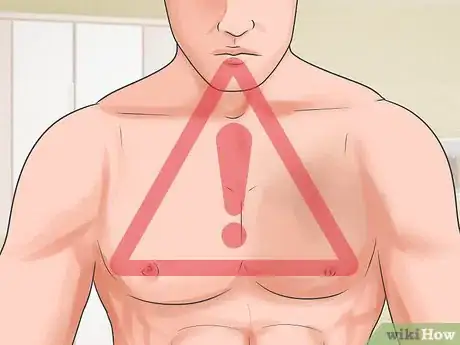


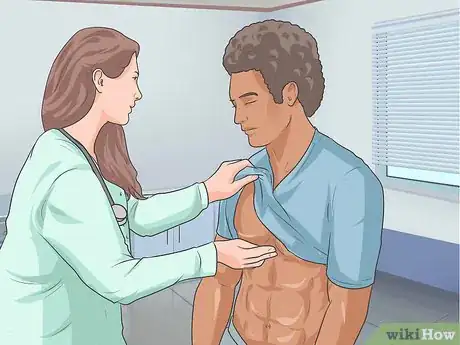
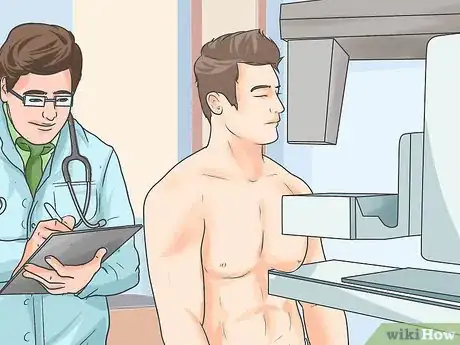
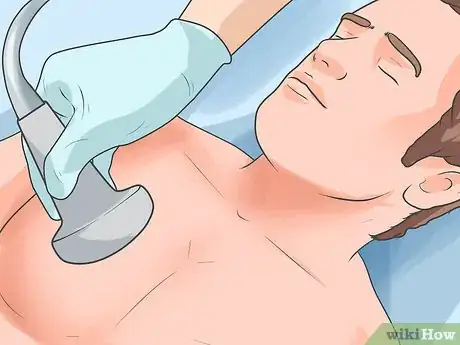
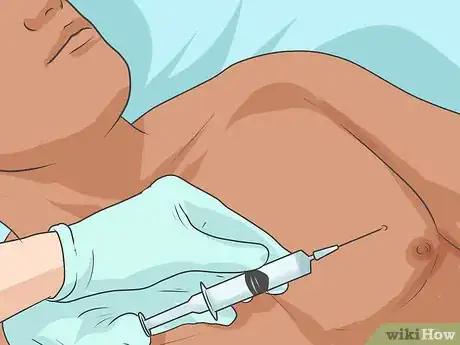




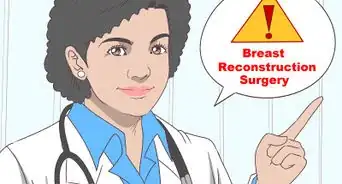


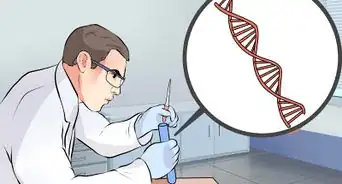

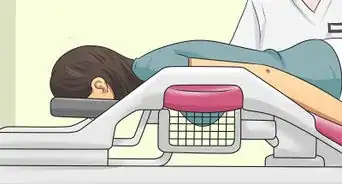










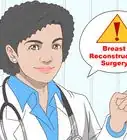



































Medical Disclaimer
The content of this article is not intended to be a substitute for professional medical advice, examination, diagnosis, or treatment. You should always contact your doctor or other qualified healthcare professional before starting, changing, or stopping any kind of health treatment.
Read More...